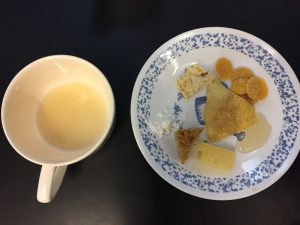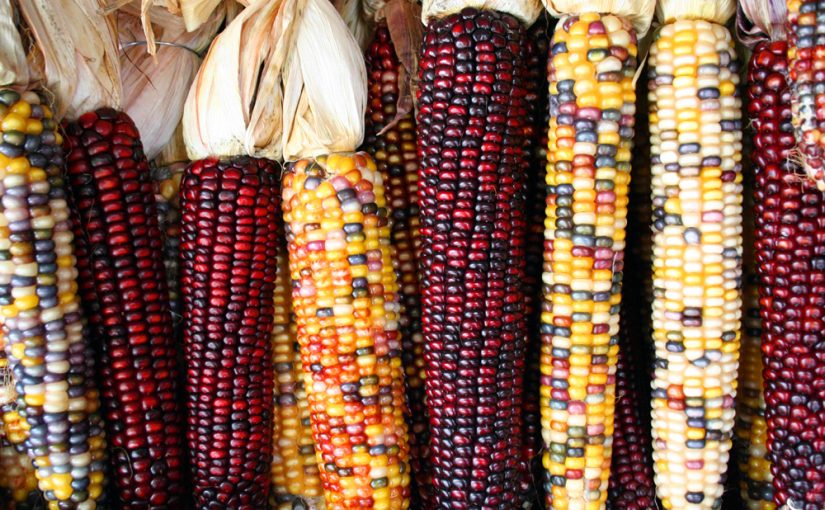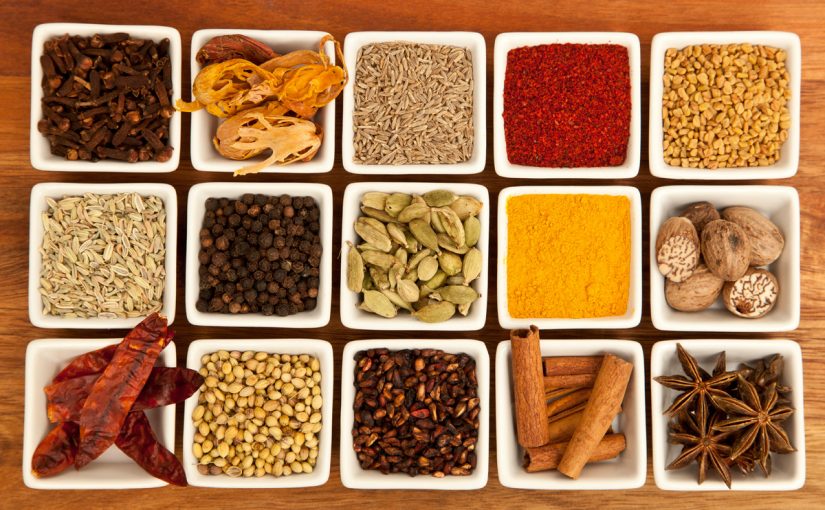Category: Tasting Lab
Week 5 Tasting Lab
This week in tasting: corn!
I can’t say this was my favorite tasting – I don’t usually even enjoy corn on the cob much, so the idea of eating so many products made from it was not particularly appealing. In the context of our reading, I understand the value of tasting these products to understand the commodity, but I still liked the gravlax and kale tastings more.

We tried cornstarch, corn cake (prepared like rice cakes), corn flakes, corn chips, pureed corn, corn syrup, polenta, and corn bread. Oh, and we had some bourbon. I enjoyed the polenta and the liquor, but I can’t say I would ever put pure cornstarch in my mouth again; it’s the kind of thing I prefer in my pressed laundry or my baked goods.
Week 3 Tasting Lab
For this week’s tasting lab, we were offered the taste of different spices: cardamom, mace, peppercorns (two black types and one white type), nutmeg, Hungarian paprika, smoked paprika, cinnamon stick, cumin, cloves, whole star anise, and vanilla. We then made our own spice blends. Mine consisted of black pepper, star anise, clove, cardamom, and nutmeg and I’m rather inclined to put it on some vanilla ice cream – I’ve always enjoyed spicy-sweet flavor combinations, and the blend I made is somewhat similar to chai spice, which is one of my favorite flavors ever.

After hand-picking kale from the Organic Farm, we roasted it with olive oil and dipped it in the different spices. I also made an everclear infusion with black pepper and bay leaf which we can sample next week. I have always enjoyed tasting foods that should be sweet and finding them savory and vice-versa, which is why I chose to infuse alcohol, which usually is made into sweet or astringent cocktails with traditionally savory flavors, creating a disparity between the flavor anticipated and the flavor experienced; the area between those two is where food is the most interesting to taste.
One of my favorite movements in recent culinary history has been the rise of gastropubs, which take traditionally basic foods and play with their texture, flavor, and appearance. At Quinn’s in Seattle, you may be served grapes bursting with carbonation due to fermentation. At the White Rabbit in Kingham, England, you may spread jam on toast and be pleasantly surprised by the fresh and unadulterated flavor of just ripe tomato bursting across your palette.
I have always enjoyed magic tricks, and my favorite came in the form of a meal I had at Spur (also in Seattle) in which I was served cheesecake with raspberry puree, which in fact was goat cheese on a cracker, cut to look like a cheesecake, and served with pickled onion puree instead. It was delicious and unexpected, and not as pretentious as some meals I’ve had (foie gras ice cream, anyone?), but rather a delightful prank played on the senses.
There is a playfulness to food too often neglected in “nice” restaurants which is what makes the gastropub so appealing – you can show up in jeans and a t-shirt and enjoy a Manny’s while being absolutely baffled by your own tastebuds.
Week 1 Tasting Lab

For this week’s tasting, we sampled different eggs before knowing their origins and again after, and contemplated the effect of knowledge and trauma on taste. We tried a plain egg, a tea egg, an egg prepared with beet juice and sugar, and salmon roe prepared in the traditional Japanese fashion. For me, learning the origin of each egg didn’t particularly impact their flavor. For example, learning that the tea egg was made with tea from Sakuma Bros. farms reminded me of my dislike of their business but didn’t effect the flavor. However, as Lindsey told us that eating salmon roe was potentially putting salmon populations in jeopardy, I felt guilty and took pause before consuming more, though I have to admit that I still finished my portion. Salmon roe is one of my favorite foods, but perhaps I will eat it in more moderation going forward.
So far, I have not found learned history of a food to impact its appeal, though as we continue through the program I may find that changes. I don’t think that it will though – I am, after all, the kid whose parents brought her to Stone Barns at the age of six and, after learning the history of the restaurant, still demanded unequivocally to have salt added to her chicken dumpling soup because it was too bland. Being a foodie and a person interested in food’s origins has never kept me from speaking my mind, and acting accordingly.
Tasting Lab Post
Tasting Lab writing activity.









